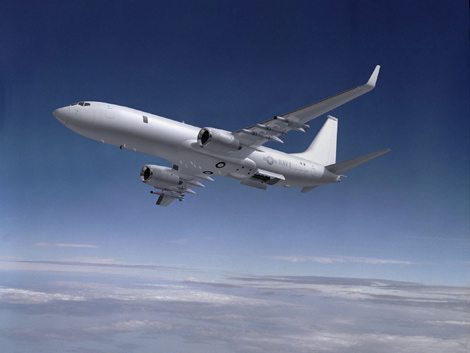The Pentagon is in fear of losing its edge in technology it has held onto for so long and is now factoring this important aspect into its budget. Worry over significant cuts in defense spending might wear down the US military, making its technological edge over Russia and China a fact of the past.
This is partially the reason why the Pentagon is planning on cutting down on troop numbers and getting rid of old weapons. Over the recent years, US defense officials have carefully observed Moscow and Beijing testing a line of sophisticated weaponry. Such artillery ranges from radar-evading aircraft to anti-ship missiles that shoot through the sky many times faster than the speed of sound.
“The development and proliferation of more advanced military technologies by other nations means that we are entering an era where American dominance on the seas, in the skies, and in space can no longer be taken for granted,” Defense Secretary Chuck Hagel said last week, according to Reuters.
Today, Hagel is supposed to unveil a budget that will include watering down the US Army’s forces by 40,000 to 50,000 troops to amounts that were only seen before America got involved with World War II and getting rid of the fleet of tank-killing A-10, known better as the “Warthog” aircraft.
The U-2 spy plane from the Cold War days will not be used anymore as to allow the Pentagon to concentrate its energy on creating the Global Hawk reconnaissance drone. Even though the Defense Department will put out an estimated $500 billion, it still spends more than the next six or seven countries put together.
Research and development spending though has dropped more than 20 percent since President Obama was sworn into office. It is forecasted that it will continue to fall as a mandatory budget is forcing caps to be put on the department in a couple of years.
“Everything, including R and D (research and development) and S and T (science and technology), takes a big hit in this defense budget,” said Mackenzie Eaglen, a defense analyst at the conservative American Enterprise Institute think tank, as stated in a Reuters’ article.
On the opposite end of the spectrum, China and Russia have been quickly increasing what is spent on security. Both nations have passed new milestones in the tech industry in the most recent years.
According to IHS Jane’s Annual Defense Budgets Review, it predicted in February that growth would be seen in China’s defense spending by 14 percent in 2014 to almost $160 billion with a percentage increase in the double digits. Russia’s is estimated to climb to over 40 percent to almost $98 billion by the 2016 year.
China has already tested out two radar-evading aircraft since 2011 alone. It created its first aircraft carrier the Liaoning in 2011. The nation has also presented an anti-satellite weapon in 2007, making the case that it could threaten US exploration and communication systems.
Beijing carried out a test flight with a hypersonic glider in January, checking out a system that has the ability to deliver a missile to its primary target. The piece of technology can fly many times the speed of sound thus eluding anti-missile defenses which might be in place.
Though the US, Russia, and India are all believed to be working out the quirks of hypersonic technology, only Washington and Beijing have carried out test flights. Meanwhile, China, Iran, and Russia have anti-ship missiles in the development process. These are supposed anti-access and area denial weapons, which have the capability of threatening possible adversaries that try to work close to its coastlines.
Advancements and exportation of precision-guided weaponry to other countries is putting a great amount of pressure on the US Navy. American forces feel the need to adapt, by creating opportunities for its units to work farther away from shore with longer-range weapons on hand.
“The United States has enjoyed a monopoly in guided weapons for about 20 years,” said Robert Work, the former Navy undersecretary nominated to be the deputy defense secretary, as stated in a Reuters’ article, “That monopoly is eroding.”
“It’s not a serious threat,” Lawrence Korb, a defense analyst with the liberal Center for American Progress think tank, “The point they’re trying to make is that if you don’t do something about … the spiraling personnel costs, then you could (face a serious threat).”
In order for the Pentagon to stay one step ahead in technology, it will go ahead and develop a new long-range bomber that to a particular degree, extent counters rivals’ systems, including anti-access and area denial systems, by allowing US forces to work from a longer distance away.
The Pentagon has its eyes set on purchasing up to 100 of the new planes for maximum $550 million per piece and is predicted to look for proposals for the aircraft during the autumn time this year. Putting the A-10 plane into retirement would allow for $3.5 billion in over a five year span to be spent elsewhere in the defense budget. The radar-evading F-35 Joint Strike Fighter, for instance, could be funded instead. It is a multi-role aircraft being created solely to replace a line of other military planes.
Currently, the F-35 is being made in small lots however, the military is expected to purchase 2,443 of this particular model to the tune of $392 billion. Defense officials claim that the 2015 budget, which will become active in October, includes funding to increase the military’s defensive and offensive cyber techniques, which are noted as a crucial part to defending the military’s computer systems and dealing with opposing groups in future combat scenarios.
Navy officials said they are expecting for funds to continue on rolling in for research on laser weapons. For example, one is to be deployed on the USS Ponce this very year with a plan to develop a gun that uses electromagnetic energy as ammo. Already, the Navy has invested $40 million so far on creating the laser weapon. The device can be used against drones, missiles, or a small fleet of boats.
It projects a beam of energy and is inexpensive. This gives the military “a technological edge that has a huge affordability piece to it,” said Rear Admiral Matthew Klunder, chief of naval research as quoted by Reuters, “That resonates in the building. This is one of those priorities that we are going to still fund.”











